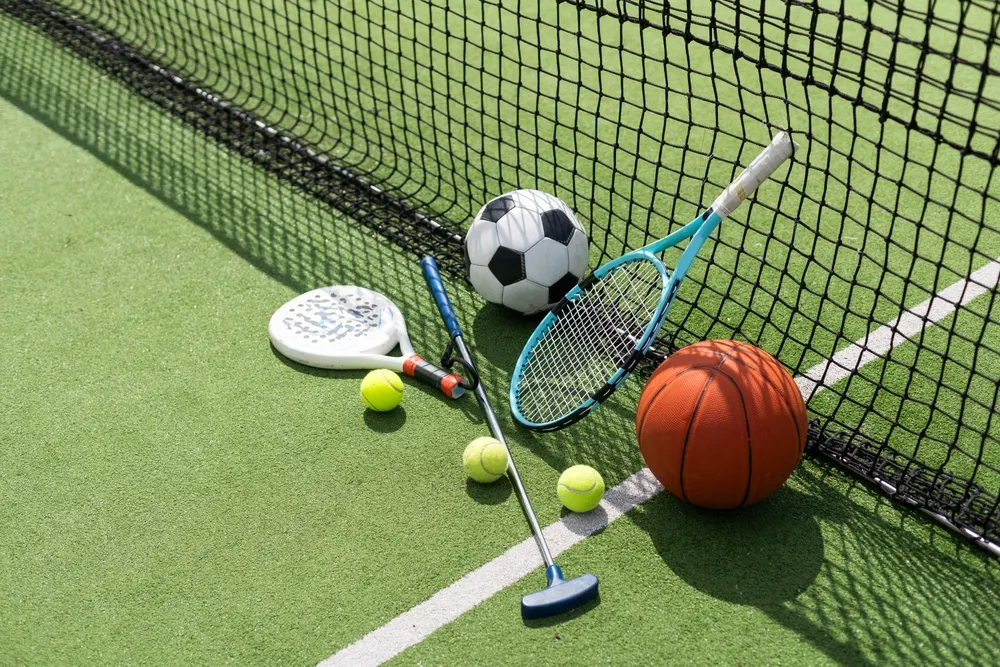How to Maintain Your Sports Equipment for Longevity

Maintaining sports equipment is essential for athletes and hobbyists alike. Regular upkeep not only enhances performance but also prolongs the lifespan of your gear, saving you from the costs of constant replacements. Whether you are a professional athlete or a weekend enthusiast, learning how to take care of your equipment can make a huge difference. In this article, we’ll explore essential tips and strategies on how to maintain your sports equipment for longevity. By doing so, you’ll ensure that your gear remains in top condition, allowing you to focus on your performance.
1. Cleaning Your Equipment Regularly
The first step in ensuring the longevity of your sports equipment is to clean it frequently. Dirt, sweat, and other elements can cause wear and tear over time.
- For Clothing and Accessories: If you play sports that require uniforms or specific gear, always follow the cleaning instructions on the label. Wash items in cold water to prevent fabric damage, and air dry whenever possible.
- For Shoes: Keep your sports shoes clean by wiping off dirt and debris after each use. Use a damp cloth or a soft brush to scrub the outer part of your shoes. Avoid putting them in direct sunlight or the dryer, as this can warp the material.
- For Gear and Equipment: Items like racquets, balls, and bats should be wiped down after each use. Sweat and oils from your skin can accumulate on the surface, leading to degradation. A simple wipe with a dry or slightly damp cloth will do wonders for extending the life of these items.
Taking the time to clean your gear ensures it will last longer and maintain its functionality, which is a key component of how to maintain your sports equipment for longevity.
2. Proper Storage
Where and how you store your equipment matters greatly. Improper storage can result in damage, especially if your gear is exposed to moisture, extreme temperatures, or direct sunlight.
- Avoid Humid Environments: Moisture can wreak havoc on sports equipment, particularly those made from leather, wood, or metal. Store your items in a cool, dry place to prevent rust, mold, or other damage.
- Use Protective Cases: If your equipment came with a case or bag, use it. Items like golf clubs, tennis racquets, and hockey sticks are more susceptible to damage without protective casing. Investing in good-quality covers will help protect your equipment from dings, scratches, and environmental factors.
- Keep Equipment Elevated: If possible, avoid storing your gear directly on the ground, especially in basements or garages. Elevating equipment keeps it away from potential water damage in case of flooding or humidity.
Proper storage is a crucial aspect when you aim to maintain your sports equipment for longevity. Not only will it keep your gear safe, but it will also reduce wear and tear from environmental factors.
3. Regular Inspections and Repairs
Another vital tip to maintain the longevity of your equipment is conducting regular inspections. Just like a car needs routine checks, so does your sports gear.
- Check for Wear and Tear: Before each game or practice, inspect your equipment for any signs of damage. Look out for frayed strings on tennis racquets, cracks in helmets, or worn-out grips on bats and handles.
- Replace Parts When Necessary: Some sports equipment comes with replaceable parts, such as strings, grips, or pads. Regularly replacing these components can prevent further damage and extend the overall lifespan of your gear.
- DIY Repairs: Minor issues, such as loose screws or scuffed surfaces, can often be handled on your own. A basic sports repair kit with essentials like adhesives, replacement screws, and wipes can go a long way in keeping your equipment in good shape. For more complex repairs, it’s best to consult a professional.
By performing regular checks and taking immediate action to fix any issues, you can maintain your sports equipment for longevity without needing constant replacements.
4. Protective Measures During Use
Taking care of your equipment while in use is just as important as post-use maintenance. Proper handling and protection during gameplay or practice can help prevent unnecessary damage.
- Use Appropriate Gear: Always use the right equipment for the sport you are participating in. Using the wrong type of ball or bat, for instance, can cause unnecessary strain on your equipment. Ensure that every piece is used as intended.
- Avoid Overuse: Overuse is a common issue in sports, particularly with shoes, gloves, and racquets. Rotate your equipment if you have extras, and avoid using the same piece repeatedly without giving it proper rest.
- Be Mindful of the Surface: The playing surface can have a significant impact on your equipment. For instance, playing on wet or rough surfaces can damage shoes, while hard surfaces can wear out the grip of racquets or bats.
Being cautious while using your sports equipment is an important part of learning how to maintain your sports equipment for longevity. By taking these protective measures, you’ll minimize the risk of damage.
5. Seasonal Maintenance
Some sports are seasonal, and equipment might not be used for extended periods. In these cases, proper storage and care during the off-season can ensure that your gear is in optimal condition when it’s time to hit the field again.
- Deep Clean Before Storing: Before putting your equipment away for a season, give it a thorough cleaning. This helps prevent any dirt or grime from setting in during storage.
- Loosen Tension on Strings and Grips: If you’re storing equipment like tennis racquets or other stringed gear, loosen the tension on the strings to prevent them from snapping or losing elasticity over time.
- Battery Care for Electronic Devices: For items like fitness trackers, smartwatches, or electronic equipment, ensure that they are fully charged before storage. Remove batteries if possible to prevent leakage.
Proper seasonal care ensures that your equipment stays in the best possible shape and helps you effectively maintain your sports equipment for longevity.
6. Know When to Retire Equipment
While maintenance can significantly extend the life of your sports gear, there comes a time when every piece of equipment reaches the end of its useful life.
- Diminished Performance: If your equipment is no longer performing as well as it used to, it might be time to replace it. For example, racquets that have lost their string tension or shoes that no longer provide proper support can impact your performance and increase the risk of injury.
- Repeated Repairs: If you find yourself frequently repairing the same part of your equipment, consider upgrading to a new item. Constant repairs may indicate that the equipment is too worn out to function efficiently.
- Visible Damage: Obvious cracks, breaks, or deformities are clear signs that it’s time to retire a piece of equipment. Continuing to use damaged gear can lead to injury or a complete breakdown during use.
Knowing when to replace gear is as important as maintaining it, and recognizing this balance is crucial in learning how to maintain your sports equipment for longevity.
Conclusion
Maintaining your sports equipment for longevity requires consistent effort, care, and attention. From cleaning and storage to regular inspections and proper use, taking small steps can significantly prolong the life of your gear. Not only does proper maintenance save you money in the long run, but it also ensures that your equipment performs at its best, enhancing your athletic experience. By following these strategies, you can enjoy your sports activities with confidence, knowing that your equipment will last as long as possible.
Keep your gear in top shape and extend its lifespan with these essential maintenance tips! For more expert advice on sports equipment care, visit InvictoSports and ensure your gear performs at its best for years to come.

